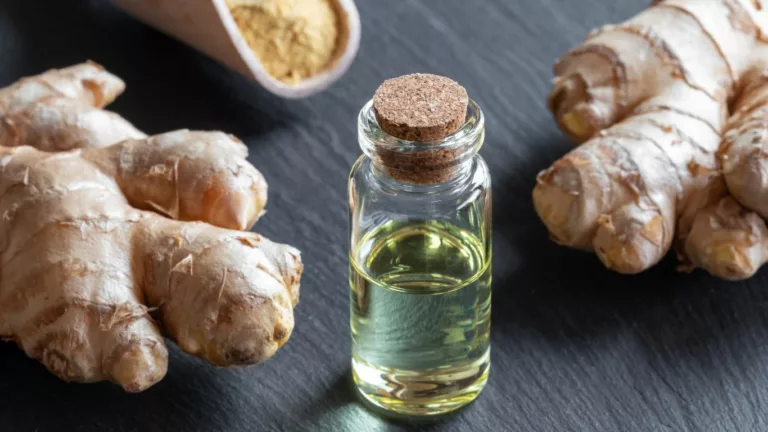Best Soups for Acid Reflux: Comfort Food That Won’t Trigger Heartburn
If you’re like me, nothing sounds better on a rough acid reflux day than a warm, soothing bowl of soup. But let’s be real—most store-bought or restaurant soups are a minefield of reflux triggers. From heavy creams to garlic overloads, it’s like they were built to torture our esophagi. After years of trial, error, and occasional regret, I’ve figured out which soups calm the burn and which send me running for the antacids. So if you’re struggling with GERD and looking for some genuinely delicious, gentle soups that don’t wreck your gut, you’re in the right place.
Why Soup Can Be a Blessing—or a Curse—for GERD Sufferers

Soups are often seen as the ultimate comfort food, and for good reason. They’re warm, hydrating, and easy to digest—perfect for days when your stomach feels like it’s doing gymnastics. But the ingredients and cooking methods make all the difference.
Common Ingredients That Can Trigger Reflux
- Tomatoes: As acidic as they come—classic heartburn culprit.
- Onions and Garlic: Delicious, but often a direct ticket to throat burn.
- Creams and Butters: High-fat bases slow digestion and spike reflux.
- Spicy Elements: Chili flakes, cayenne, pepper—don’t even think about it.
According to Mayo Clinic, avoiding high-fat and acidic foods is key in managing GERD symptoms. So if your idea of soup still includes tomato bisque or French onion, it’s time to rethink the menu.
Soup Bases That Love Your Stomach Back

Let’s talk bases. A good soup starts with a gentle foundation that’s kind to your digestive tract. After burning my way through countless bowls of “harmless” soups, here’s what consistently works:
Low-Acid Vegetable Broths
Think zucchini, carrots, celery, and spinach—not tomatoes. Homemade veggie broth is my go-to. I toss in alkaline veggies and herbs like basil and parsley. Add a touch of ginger for anti-inflammatory benefits and you’ve got a gut-soothing goldmine.
Bone Broth (No Garlic or Onions)
I used to avoid bone broth, thinking it was too rich. But when made simply—with lean cuts and no heavy seasoning—it’s actually pretty gut-friendly. A warm mug of this helped me through a nasty GERD flare-up during flu season last year.
Oat Milk or Almond Milk Base (Unsweetened)
Want a creamy feel without the reflux backlash? Unsweetened oat milk has been a game-changer. I’ve crafted low-fat GERD-safe recipes with it that even my picky sister enjoys—and she doesn’t even have reflux.
Soothing Ingredients That Actually Work

Let’s stop tiptoeing around flavor. Bland doesn’t have to mean boring. You can still craft a rich, flavorful soup that won’t launch a full-scale esophageal revolt.
Root Vegetables
- Carrots: Sweet, alkaline, and they blend beautifully.
- Sweet Potatoes: Comforting and nutrient-rich without being acidic.
- Parsnips: Totally underrated—adds body and subtle sweetness.
Pro tip: Roast them before adding to your soup for deeper flavor without needing garlic or onion.
Herbs and Seasonings That Go Easy on the Gut
- Turmeric: Great anti-inflammatory kick without the spice.
- Fresh Basil: Gentle, aromatic, and versatile.
- Ginger: My personal hero during reflux flares—adds zing without the burn.
One study published in the National Library of Medicine even shows ginger can significantly reduce nausea and gastric inflammation.
Common Mistakes That Can Ruin a GERD-Friendly Soup

I’ve made every mistake in the reflux soup playbook. Let me save you the pain (and the wasted groceries):
- Using canned broths: Most are loaded with sodium and hidden garlic/onion powders.
- Forgetting to strain your soup: Whole seeds or rough veggie skins can be irritating.
- Adding too much oil or butter at the end: A single tablespoon can spike symptoms.
If you’re serious about dialing in symptom control, also explore effective lifestyle changes for GERD—it’s not just what you eat, but how you eat it.
When and How to Eat Soup for Maximum Relief

This might sound obvious, but timing and portion matter a lot. I’ve had zero symptoms with a particular soup at lunch… and full-on reflux at dinner. Why? Simple:
Best Practices
- Eat slowly: I know, I know—easier said than done, but it helps reduce overeating.
- Keep portions light: Go for 1 cup, not a 3-bowl feast. I learned this the hard way after doubling up on a lentil-carrot blend one night. Yikes.
- Don’t lie down right after: Give your food at least 2–3 hours to settle. Even soup needs time to digest properly.
And if you’re combining your soup with bread or a side dish, choose GERD-safe carbs like oatmeal bread or boiled potatoes.
Next Up: The Best Soothing Recipes I Swear By

Now that you know what to use—and what to avoid—let’s dive into the fun part next: delicious, healing soup recipes that will actually make your mouth water without triggering your reflux. From a ginger-carrot puree to an almond milk-based creamy zucchini blend, I’ll share what works, what’s fast to prep, and what even picky eaters love.
To better understand why managing soup ingredients is crucial for reflux, check out this in-depth guide on the best GERD diet plan. It’ll give you a solid foundation beyond just soup choices.
My Favorite GERD-Friendly Soup Recipes (Tested & Loved)

These are the real deal—the soups I make again and again when my stomach’s feeling off. I’ve tested them during bad flare-ups, post-meal discomfort, and even while recovering from a stomach virus. All of these are easy to prep, rich in nutrients, and most importantly—they don’t set my esophagus on fire.
1. Ginger Carrot Sweet Potato Soup
This one’s warm, gently spiced, and naturally sweet. The ginger soothes inflammation, while carrots and sweet potatoes add fiber and antioxidants.
- 1 tbsp olive oil
- 3 large carrots, peeled and chopped
- 1 sweet potato, cubed
- 2 tsp freshly grated ginger
- 3 cups low-sodium veggie broth
- Optional: splash of oat milk for creaminess
Sauté the veggies lightly, then simmer everything together for about 25 minutes. Blend it silky smooth and enjoy warm. Bonus: this freezes well for reflux emergencies!
2. Creamy Zucchini Basil Soup (Without Cream)
Once I discovered how silky blended zucchini gets with just a touch of almond milk, I never looked back. It’s like a fancy soup, minus the dairy drama.
- 1 tbsp olive oil
- 4 zucchini, sliced
- 2 cups low-sodium veggie broth
- 1/2 cup unsweetened almond milk
- Handful of fresh basil
Cook the zucchini until soft, blend with the other ingredients, and season lightly with salt and turmeric. Serve with a side of GERD-friendly bread or steamed rice.
3. Gut-Soothing Rice and Fennel Broth
This one came to me after a bad flare-up. I needed something bland but comforting, and this light soup was perfect. Fennel has mild carminative properties that help with bloating and reflux symptoms.
- 1/2 cup cooked white rice
- 1/2 bulb fennel, thinly sliced
- 4 cups filtered water or homemade broth
- Pinch of salt and a few sprigs of parsley
Simmer until fennel is tender. Serve warm and sip slowly. Great for light dinners or post-nausea recovery.
Tips to Make Any Soup GERD-Friendly

Even if you’re tweaking your own recipes, these hacks have saved me more than once from accidental flare-ups:
- Use low-acid broths only: Skip tomato, beef, or chicken broths that contain additives or natural flavorings—they often hide garlic or onion powder.
- Always taste test for seasoning: When you remove garlic, onion, or spice, soups can feel flat. A squeeze of lemon juice might sound tempting—but it’s a trap! Use basil, parsley, or a small amount of white miso instead.
- Batch cook and freeze: I prep soup in big batches, portion into glass containers, and freeze them. That way, even when GERD hits hard, I’ve got options without resorting to takeout.
Don’t forget to pair your meal with proper post-meal habits. If you’ve just enjoyed a soothing bowl, avoid lying down right after. This is a common mistake even seasoned GERD warriors make. A full guide on GERD-friendly lifestyle changes can really help long-term.
Pairing Soups With the Right Sides

Soup alone can be satisfying, but if you need to round it out, go for sides that complement your gut—not fight it. Through lots of personal trial and error, here are a few things that work wonderfully for me:
Best Sides for Soup
- Boiled or steamed potatoes: Plain or lightly seasoned—soothing and filling.
- Toast with almond butter: Choose low-acid bread and unsweetened almond butter (not peanut butter—it can be a trigger).
- Plain white rice with herbs: Great neutral base that’s gentle on the stomach.
Things I Learned to Avoid
- Crackers with “seasoning blends”: Even “natural flavoring” can mean garlic or MSG.
- Creamy dips and spreads: Most include sour cream or mayo—two of my personal triggers.
There’s a great deep dive on GERD-friendly snacks if you want to explore what’s safe beyond mealtime.
Slow Cooker Soups: The Lazy Way to Eat Smart

I don’t know about you, but there are days when cooking feels like a marathon. That’s where slow cookers and pressure cookers come in—dump, set, and forget. Some soups even get more flavorful overnight.
My Lazy Go-To Slow Cooker Soup
- 2 carrots
- 2 peeled zucchinis
- 3/4 cup rolled oats
- Handful of chopped kale (optional)
- 4 cups water + pinch of sea salt
Let it go low for 6–7 hours. Blend, top with parsley, and you’ve got a creamy, filling bowl without any dairy or acid.
This is one of the few meals I can eat when I’m barely functioning. There’s something about a warm, slow-cooked bowl that just hugs your gut in all the right ways.
What If Your Soup Still Triggers Reflux?

Honestly? Sometimes even the “safe” ingredients act up. You might be sensitive to high fiber when your gut’s inflamed. Or your soup might be too hot temperature-wise (yep, that can irritate the esophagus).
What You Can Do
- Cool the soup a bit: Let it sit for a few minutes before eating.
- Eat in smaller bites: Large spoonfuls mean more swallowing effort—bad for reflux.
- Track symptoms: Use a journal or app to note what ingredients might be acting up.
If you’re noticing reflux even after eating bland soups, it may be time to revisit your diagnosis or try targeted treatment strategies. Accurate diagnosis plays a massive role in tailoring your diet effectively.
Advanced Soup Strategies for Chronic GERD

Once you’ve nailed the basics, there’s still room to level up. I’ve dealt with GERD for over 7 years, and there are days my stomach is extra picky. So I’ve built a routine around soups that not only calm symptoms but also help prevent flare-ups altogether. If you’ve tried the beginner-friendly recipes and still feel like you’re walking a digestive tightrope, this section’s for you.
Rotate Ingredients to Avoid Food Sensitivities
Eating the same thing every day sounds simple, but it can backfire. I used to eat a carrot-ginger soup daily for two weeks straight—until I started feeling bloated and acidic again. Rotating ingredients like squash, green beans, and lentils (in small amounts) keeps your gut from getting overwhelmed.
Be Careful with Soup Temperature
Too hot can be just as bad as too spicy. I once scalded my throat with hot broth during a stressful lunch break, and it kicked off a two-day sore throat spiral. Lukewarm or gently warm is always better if your esophagus is already inflamed.
Layer in Functional Gut Support
- Ground flaxseed: Just 1 tsp adds fiber and helps move things along gently.
- Slippery elm powder: Known to coat and soothe the digestive tract. Stir it in after cooking.
- Chamomile tea: I steep it and use it as my soup liquid base—surprisingly effective on bad days.
If you’re curious about herbal approaches for symptom management, here’s a solid list of natural GERD remedies that may complement your soup game.
Smart GERD-Safe Soup Meal Prep System

One of the easiest ways to stay consistent with reflux-safe eating is meal prep. I’ve created a simple weekly routine that’s helped me avoid impulse eating, especially on stressful days when takeout is dangerously tempting.
How I Prep Soups for the Week
- Pick 2 recipes: One blended (like creamy carrot) and one broth-based (like rice-fennel).
- Cook in bulk: Make 4 servings of each, store 2 in the fridge, 2 in the freezer.
- Label with notes: I include when it was cooked and whether I tolerated it well last time (helps with symptom tracking).
Also helpful: keep a few “emergency” frozen containers for nights when your stomach feels off. Trust me, this saved me during a bad flare-up last month when even tea felt risky.
Ordering Soup at Restaurants (Without Regret)

Dining out with GERD is like a game of culinary Russian roulette. But with the right strategy, you can absolutely enjoy soup at a restaurant without wrecking your night. Here’s what’s worked for me over the years:
Questions to Ask Your Server
- “Is there onion or garlic in the base?” – If yes, skip it.
- “Is the broth made from scratch or packaged?” – Go for house-made if possible.
- “Can you serve it with no cream, tomatoes, or spice?” – Most places will accommodate if asked nicely.
I also keep this GERD dining out guide bookmarked on my phone. It’s helped me avoid some painful mistakes.
GERD-Friendly Menu Buzzwords
- Clear broth
- Steamed or pureed vegetables
- Low-sodium or heart-healthy
Red flags? Anything “spicy,” “zesty,” “loaded,” or “chef’s special.” They usually come with mystery seasonings or acidic elements.
Weekly Soup Rotation Plan for Reflux Relief

Consistency is key—but variety keeps it enjoyable. Here’s a rotation I follow regularly, built from personal trial and a lot of “nope, never again” soups.
Sample Weekly GERD-Safe Soup Plan
- Monday: Ginger carrot sweet potato
- Tuesday: Creamy zucchini with basil
- Wednesday: Rice and fennel broth (light dinner)
- Thursday: Lentil spinach with turmeric (low-spice, high protein)
- Friday: Cabbage-apple puree (don’t knock it till you try it)
- Saturday: Broccoli rice soup (steamed broccoli, pureed into broth)
- Sunday: Leftovers or slow cooker veggie blend
Keep it flexible. If something didn’t sit well last week, swap it out. Use your symptom tracker to adjust, and don’t forget hydration—soups help, but water intake still matters big time.
Closing Advice: Healing Through the Bowl

If you’ve made it this far, it means you’re committed to healing—not just masking symptoms. I’ve lived through the frustration of feeling betrayed by “healthy” food, and the journey to figure out what my body actually tolerates has been anything but linear. But soups have truly been a pillar of relief for me.
Start simple, listen to your gut, and don’t beat yourself up for the occasional misstep. The good news? Every bowl gives you a chance to reset, nourish, and ease the burn—one spoonful at a time.
For a deeper dive into managing symptoms beyond the bowl, check out this guide on recognizing and addressing key GERD symptoms. The more you understand your body’s signals, the more empowered you’ll feel at the table—and beyond.

Camellia Wulansari is a dedicated Medical Assistant at a local clinic and a passionate health writer at Healthusias.com. With years of hands-on experience in patient care and a deep interest in preventive medicine, she bridges the gap between clinical knowledge and accessible health information. Camellia specializes in writing about digestive health, chronic conditions like GERD and hypertension, respiratory issues, and autoimmune diseases, aiming to empower readers with practical, easy-to-understand insights. When she’s not assisting patients or writing, you’ll find her enjoying quiet mornings with coffee and a medical journal in hand—or jamming to her favorite metal band, Lamb of God.






